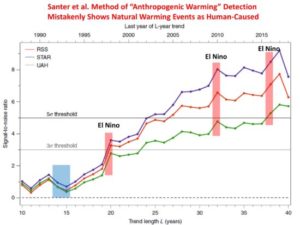by K. Richard, Aug 22, 2025 in NoTricksZone
Utilizing AI’s evidence-streamlining capabilities, a new study (with “Grok” literally positioned as the lead author) summarizes a few of the key counterpoints undermining the CO2-drives-climate narrative.
For example, consider that humans contribute just 10 GtC per year to the carbon cycle, whereas nature’s sources (ocean outgassing and soil respiration, primarily) contribute 220 GtC annually. The combined total (230 GtC/year) does not distinguish between sources, and thus natural sinks that remove carbon from the atmosphere proportionately absorb human as well as natural emissions, with the human percentage (4%) insignificant and the natural predominant (96%).
But even if the last century of rising CO2 was 100% anthropogenic, the empirical data indicate the residence time for atmospheric CO2 is just 3-7 years. This necessarily precludes the possibility for anthropogenic CO2 in particular to be the driver of presumed radiation imbalances, or radiative forcing. This is because the tiny anthropogenic component is too quickly removed from the cycle to have more than a negligible impact. Nearly 90% of CO2 derived from human emissions sources since 1750 has already been removed, absolving humans of the alleged responsibility for (allegedly CO2-induced) climate change.
The atmospheric CO2 residence time would need to last centuries for the presumed effects of anthropogenic CO2 to have the dominant impact the UN’s Intergovernmental Panel on Climate Change (IPCC) claims it has. So what has the IPCC decided to do? Of course, the IPCC (and those hoping to blame humans for climate change) rely on modeled assumptions that the atmospheric CO2 residence time is, yes, over 100 years. There is no empirical basis validating these assumptions. To put it crudely, the IPCC’s 100-year CO2 residence time model is made up. Fake.
The study also addresses the causality problem that the CO2-drives-temperature narrative has, as there are many studies affirming CO2 changes follow, rather than lead, temperature changes. This T→CO2 directionality is not only observed in the short-term (months), but in paleoclimate studies (an 800-year CO2 lag) as well.
In sum, there is ample evidence available to support the conclusion anthropogenic CO2 does not drive climate change.
…

